Tony O’Neill is the founder of Simplify Beekeeping and an experienced beekeeper with over a decade of hands-on experience. Starting with just a few hives to support his garden, Tony’s passion for beekeeping quickly grew into managing 45 hives. He’s dedicated to making beekeeping accessible and enjoyable for everyone, sharing his knowledge through practical tips, in-depth guides, and engaging videos. When he’s not tending to his bees, Tony enjoys teaching others about the joys of beekeeping, both online and in his local community.
Are you curious about how we can bring nature back into our cities? Urban beekeeping might be the answer. This practice is not just about getting sweet honey. It’s a way to help our environment, especially in busy cities.
We see more flowers and plants because of bees. They move pollen from one flower to another, which helps plants grow fruits and seeds.
Urban beekeeping has grown fast recently. People are trying new ways to keep bees in city places. These include using technology like sensors and machines that learn on their own to check on hives without bothering the bees too much.
Our blog will discuss these cool new tools and methods for keeping bees in the city. It will also show how urban beekeeping is good for us all, improving our food system and teaching people about nature.
Ready to learn more? Keep reading!
Key Takeaways
- Urban beekeeping has grown because of technology like sensors and AI. This tech helps people check on hives without disturbing the bees too much.
- Bees in cities help by pollinating plants more than country bees do. They make city gardens full of life and color.
- New tools let beekeepers manage their hives from anywhere using their phones. These tools give real-time data about hive health.
- Teaching people about bees is essential for keeping both bees and humans safe in cities.
- Cities are losing places where bees can live, which hurts the number of flowers being pollinated.
The Evolution of Urban Beekeeping
Urban beekeeping has moved from traditional practices to modern methods. The history and transition outline the changes in urban beekeeping approaches over time.
Brief History
People have kept honey bees for more than 9,000 years. They did this to make honey and other products like wax. Keeping bees became part of farming and nature.
In the 1980s, Paris started urban beekeeping. Experimental hives were placed on the Opera Garnier’s roof, which showed that cities could also be good places for bees. Now, many cities around the world also practice urban beekeeping.
Transition to Modern Practices
Urban beekeeping turned a new leaf after 2010 when New York made it legal. Soon, Boston in 2013 and Los Angeles in 2015 followed. This move from underground to official had a significant impact.
Cities now consider hives on roofs and in gardens as standard parts of life. Technology has also changed how people keep bees in cities.
Urban beekeeping is not just about honey; it’s about making our cities alive.
Now, beekeepers use the Internet and machines to better care for their hives. They learn from each other online, and with new tools, they fight problems like colony collapse disorder together.
With these changes, urban beekeeping helps pollinate city plants and teaches people about nature.
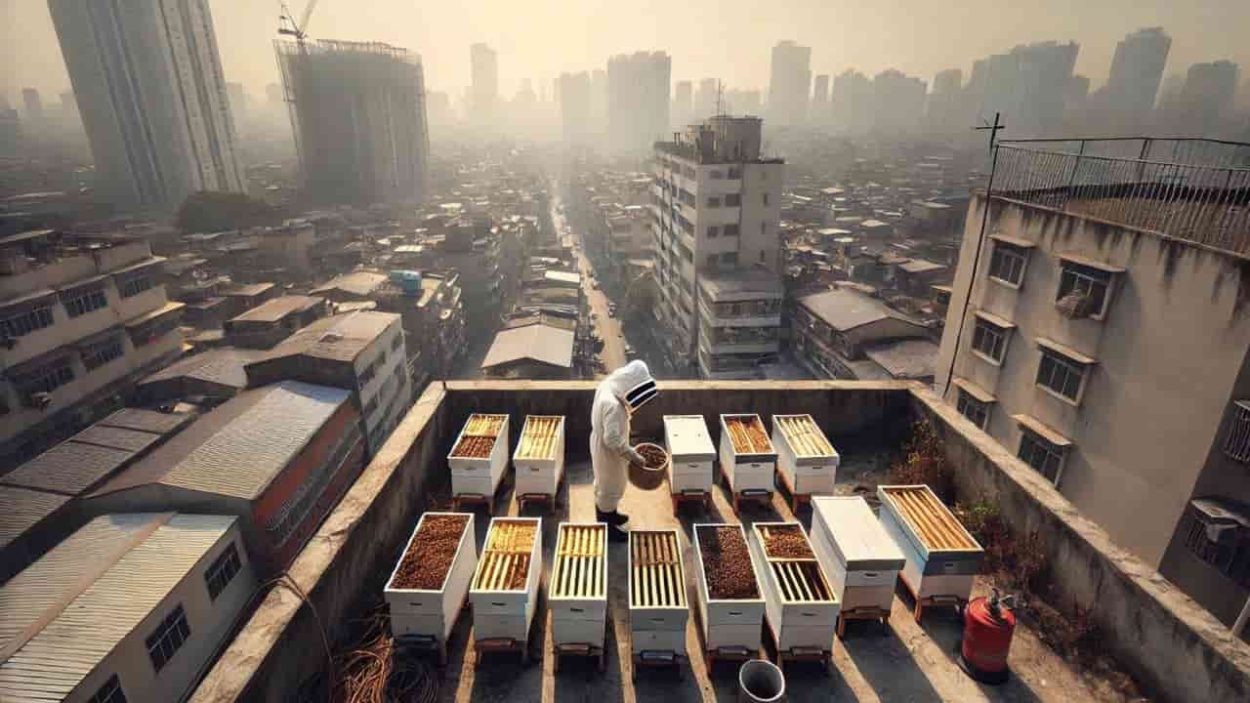
Key Benefits of Urban Beekeeping
Urban beekeeping offers numerous advantages. It helps pollinate urban green spaces and improves local biodiversity. Moreover, it provides educational opportunities for urban populations and supports sustainable urban development.
Pollination of Urban Green Spaces
Bees in cities work hard. They pollinate eight times more kinds of plants than bees in the country, helping city gardens grow many different flowers and plants. Bees also help over 85 types of crops.
This makes urban areas better for growing food like fruits and vegetables.
City bees visit many flowers every day. They collect nectar and spread pollen between plants, which helps flowers make seeds and new plants grow. With more bees, city parks and gardens become full of life and color.
These green spaces give fresh air and beauty to cities where concrete often rules.
Improvement of Local Biodiversity
Urban beekeeping helps many native species survive. The U.S. is home to over 4,000 of these species. Bees play a significant role in this by moving pollen from one plant to another. This action helps plants grow, breed, and produce food.
Studies have found that honeybees do well in places with many different kinds of flowers rather than just one type. More types of flowers mean bees can find more nectar and pollen.
This variety also supports other animals and keeps the ecosystem healthy.
Educational opportunities for city people come next after improving local biodiversity.
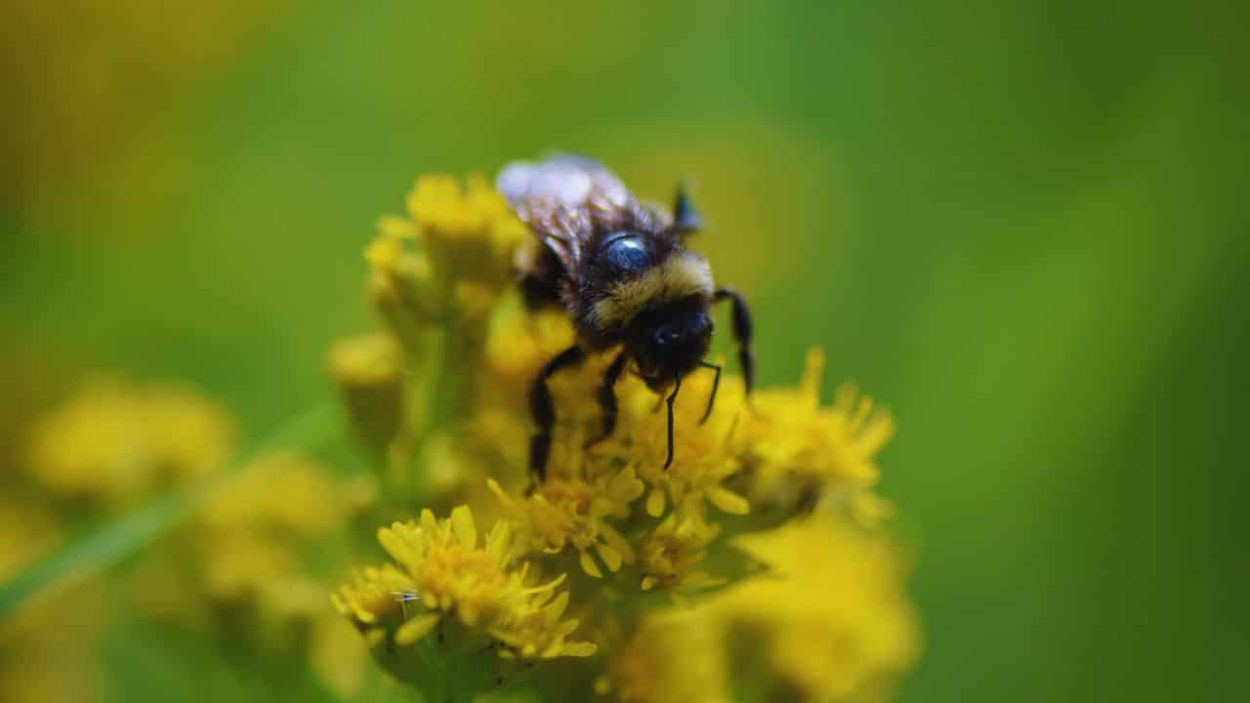
Educational Opportunities for Urban Populations
Improving local biodiversity leads to more chances for city people to learn. Urban beekeeping offers these learning opportunities. Schools and community groups can get involved. They learn how bees affect the ecosystem and our food supply.
Beekeeping reconnects city residents with nature. It also contributes to sustainability programs at companies, which attract workers and people who live nearby to environmental issues.
They see how important bees are for pollinating plants, making honey, and keeping healthy ecosystems.
Support for Sustainable Urban Development
Urban beekeeping boosts green building scores like LEED, showing how cities can help the environment. Bees on buildings are a cheap way to add green roofs, and they don’t need big changes to the structure.
This makes cities more sustainable.
Putting bees in urban areas helps with biodiversity and green design. It is good for plants in cities. These efforts lead to healthier city environments. Using bees this way supports sustainable future goals for all of us.
Challenges Facing Urban Beekeepers
Urban beekeepers face obstacles such as managing hive placement, ensuring human-bee interactions are safe, and dealing with the loss of pollinator habitats. Light pollution in urban beekeeping is also a challenging situation. Read more about how urban beekeeping is evolving.
Hive Placement and Management
Hive placement needs careful thinking. Rooftops are great spots that we don’t use enough.
- Look for flat rooftops in cities to put hives. These spots are safe from people walking by and give bees a quiet place.
- If you’re in a colder area, make sure the hive faces south. The sun keeps the hive warm most of the day.
- Use fences or screens around hives on rooftops. They help bees fly up and away from people quickly.
- Keep water close to your hives. Bees need lots of water, especially in hot weather.
- Choose locations with lots of flowers nearby. Gardens and parks are perfect for bees to find food quickly.
- Talk to neighbors before placing hives. They must understand and support what you’re doing.
- Work with local schools or community groups to teach about beekeeping. They might also let you put hives on their properties.
- Check city rules about keeping bees in your area before setting up any hives.
- Plan how you will reach your rooftop hives safely for regular checks and honey extraction.
- Think about using lightweight materials for your hives so they’re easier to move if needed.
These steps help manage beehives in cities well, making sure both bees and people can live together happily.

Human and Bee Interaction Management
Choosing where to place bee homes is just the start. Next, we need to focus on how people and bees can live together safely.
- Teach people about bees. Offer classes in schools and communities. This makes everyone safer.
- Use signs to tell people where bee areas are. Signs help keep both bees and humans safe.
- Create safe paths for people away from bee homes. This will allow bees and people to move without encountering each other too much.
- Work with local leaders to establish rules for keeping bees in the city. These rules can help everyone understand what is safe.
- Give bees water and plants they like close to their homes. This keeps them from visiting places where people hang out.
- If needed, build fences or barriers around bee areas. This will prevent people from accidentally entering places where bees live.
- Pick times to take care of the bees when not many people are around. Early mornings or late evenings are good times.
- Train bees gently to reduce their want to sting. Gentle handling makes bees calmer.
- Keep hives healthy to prevent disease from spreading to wild bees. Nearby cities might have different types of wildflowers that can affect this point.
- Use tools like apps to teach more about bees and their role in our world. Technology helps people learn better.
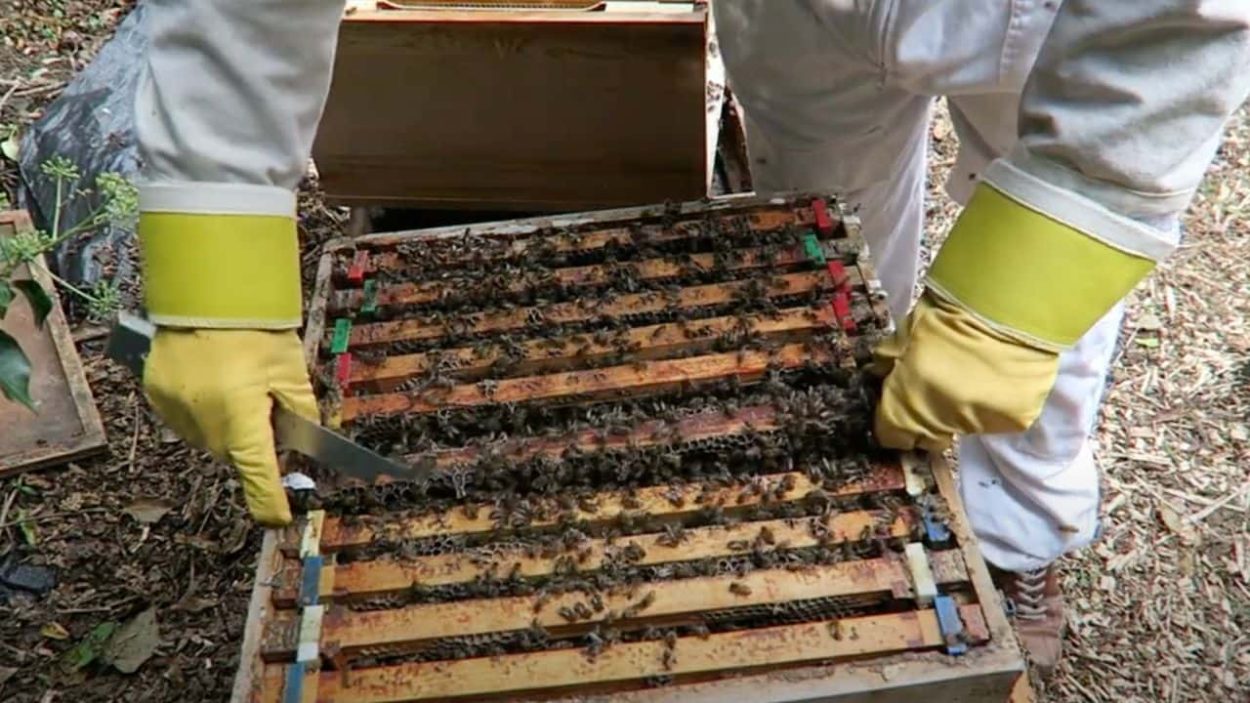
Loss of Pollinator Habitats
Cities like New York, Houston, and San Francisco are losing places where bees can live because of building work. Bees help plants grow by moving pollen from one flower to another.
But when their homes disappear, there are fewer bees to do this job.
High hive density hurts wild pollinators.
Too many bee homes in one place can also be bad for wild bees. They have a more challenging time finding enough food. This problem makes it difficult for all kinds of bees to stay healthy and keep helping plants grow.
Innovations in Urban Beekeeping
New and sophisticated tools for urban beekeeping have emerged to enhance bee management. The integration of AI-powered devices, mobile apiary management, and precision techniques has revolutionized urban apiculture.
Mobile Apiary Management
Mobile apiary management is an essential tool for beekeepers. It allows them to monitor hive conditions and keep track of their bee colonies on the go. This innovation provides valuable real-time data about factors like temperature, humidity, and activity levels within the hives.
For instance, BeeTech Services from Latvia has developed “BeeKing” to offer comprehensive hive management capabilities through a mobile platform. Similarly, ApiMoov in France provides a mobile app specifically designed to track hive conditions.
These tools enable beekeepers to make informed decisions and ensure the well-being of their bee colonies with greater ease and efficiency.
Furthermore, such mobile applications also contribute to the sustainability of urban beekeeping by helping manage beehive placement effectively and ensuring optimal conditions for honey production while minimizing potential challenges such as varroa mite infestations or disease outbreaks.
By leveraging these technological advancements, urban apiarists can enhance precision in monitoring their hives’ health and productivity while promoting biodiversity conservation within urban landscapes.
Therefore, these innovative solutions play a crucial role in empowering modern apiarists with tools that support sustainable practices and efficient hive management in urban environments.
Overall, mobile apiary management represents a significant step forward in improving urban beekeeping practices by equipping beekeepers with accessible technology that enhances their ability to care for their colonies without being confined to fixed locations.

AI-Powered Beekeeping Tools
AI-powered beekeeping tools are transforming the way beekeepers manage their hives. For instance, Humming Hyve from Pakistan debuted “Bumble Bee V1.0” for hive monitoring. This technology facilitates real-time data collection and analysis, empowering beekeepers to monitor hive health and activity closely.
Moreover, Agrobee in Brazil created a smartphone app connecting farmers with apiarists for pollination services, demonstrating how technology can promote collaboration within the industry.
These advancements not only streamline hive management but also support the overall health and sustainability of bee populations by offering valuable insights into hive conditions and improving communication among stakeholders in apiculture ecosystems.
As urban beekeeping continues to expand, these AI-powered tools will play a key role in promoting sustainable practices and aiding in the conservation of essential pollinators.
Such innovations highlight the potential impact of technological integration in urban beekeeping practices. Looking ahead, the ongoing development and adoption of such tools are positioned to improve precision agriculture techniques further, benefiting both bees and urban ecosystems.

Precision Beekeeping Techniques
The introduction of precision techniques has significantly improved urban beekeeping. Innovations such as mobile apiary management and AI-powered tools have changed the way beekeepers monitor their hives.
For example, “Beeasy” introduced by We’ll Bee in Italy, and “Beeprecise” developed by Ecosight Technologies in India offer real-time hive data for better decision-making.
These advancements help urban beekeepers to closely monitor their hives closely, ensuring the health and productivity of their colonies while contributing to sustainable urban development.
Precision techniques like these enable apiculturists to manage their hives actively through remote monitoring and data-driven decisions.
The use of IoT technology provides accurate insights into hive conditions, promoting healthier honeybee colonies in urban settings.
Technological Advances Supporting Urban Beekeeping
Technological advances are revolutionizing urban beekeeping. Tools such as in-hive sensors and automated systems are streamlining hive management, while remote monitoring allows beekeepers to monitor their colonies from afar.
These innovations, coupled with data-driven decision-making enabled by machine learning, are shaping the future of sustainable urban beekeeping.
In-Hive Sensors and Automated Systems
In-hive sensors and automated systems have transformed urban beekeeping. Revolutionary tools like laser-based devices for Varroa mite prevention and beehive monitoring systems have notably enhanced hive management.
Complex, in particular, has developed cutting-edge technology to address Varroa mites, while Intelligent Hives from Poland introduced an advanced monitoring system that aids in better hive maintenance.
These advancements highlight the significant impact of technology on modern beekeeping practices. By integrating these technologies into apiaries, beekeepers can effectively prevent infestations and remotely monitor hive conditions.
This not only leads to healthier colonies but also enhances the overall productivity of urban beekeeping operations. With these tools, it is now simpler to ensure the well-being of honeybee populations, which is essential for sustainable urban development and ecosystem preservation.

Remote Hive Monitoring
Transitioning from in-hive sensors to remote hive monitoring has revolutionized urban beekeeping. Advanced technologies have enabled beekeepers to monitor their hives remotely, improving efficiency and productivity.
For instance, apic.ai from Germany automates pollinator behavior monitoring, while BeeSage in the Netherlands developed a digital beehive scale for tracking production capacity. These innovations allow beekeepers to access real-time data about hive conditions, temperature, humidity, and even the overall health of the colony without physically disturbing the bees.
Moreover, remote hive monitoring is instrumental in mitigating potential threats, such as pests or diseases, by providing early detection through continuous surveillance. This approach emphasizes precision beekeeping techniques with machine learning (ML) capabilities and Internet of Things (IoT) connectivity, enabling proactive interventions to ensure the well-being of bee colonies.
By leveraging these technological advancements, urban beekeepers can make data-driven decisions, leading to more sustainable practices and healthier beehives.
Data-Driven Decisions with Machine Learning
Best Bees’ data-driven approach has transformed urban beekeeping. Using machine learning, they gather and analyze vast amounts of information on interventions that influence bee health and honey production, allowing them to identify trends and make well-informed decisions.
By sharing successful strategies among beekeepers, they facilitate the adoption of best practices, thus contributing to the overall well-being of bees in urban environments. This innovative use of technology not only improves apiculture but also promotes sustainable practices by leveraging big data analytics for ecological conservation.
The use of AI and machine learning in urban beekeeping represents a significant shift towards precision management. Best Bees’ data-centric approach enables apiarists to understand better and address challenges such as pest control, disease prevention, and habitat preservation.
Through continuous analysis and adaptation based on real-time insights gleaned from the collected data, urban beekeepers are empowered to make informed decisions that benefit both bees and the surrounding ecosystems.
Sustainable Practices in Urban Beekeeping
Urban beekeeping relies on natural pest management strategies, disease prevention, and breeding for genetic diversity to ensure the health of bee colonies and sustainability in urban areas.
For more insights, visit our blog!
Natural Pest Management Strategies
Natural pest management strategies are essential for reducing reliance on chemical pesticides. These methods play a significant role in maintaining a balanced ecosystem within bee colonies.
For example, Combplex has developed a unique laser-based device that explicitly targets Varroa mites without resorting to chemicals or harmful substances. This innovative approach not only addresses the issue of pests but also minimizes the potential negative impact of chemical pesticide exposure on bees and their environment.
Moreover, these natural pest management strategies contribute to sustainable practices in urban beekeeping by promoting biodiversity and reducing the reliance on chemical interventions.
By integrating such methods, urban beekeepers can effectively protect their hives from pests while ensuring the preservation of ecological balance and health supplements for bees within their habitat.
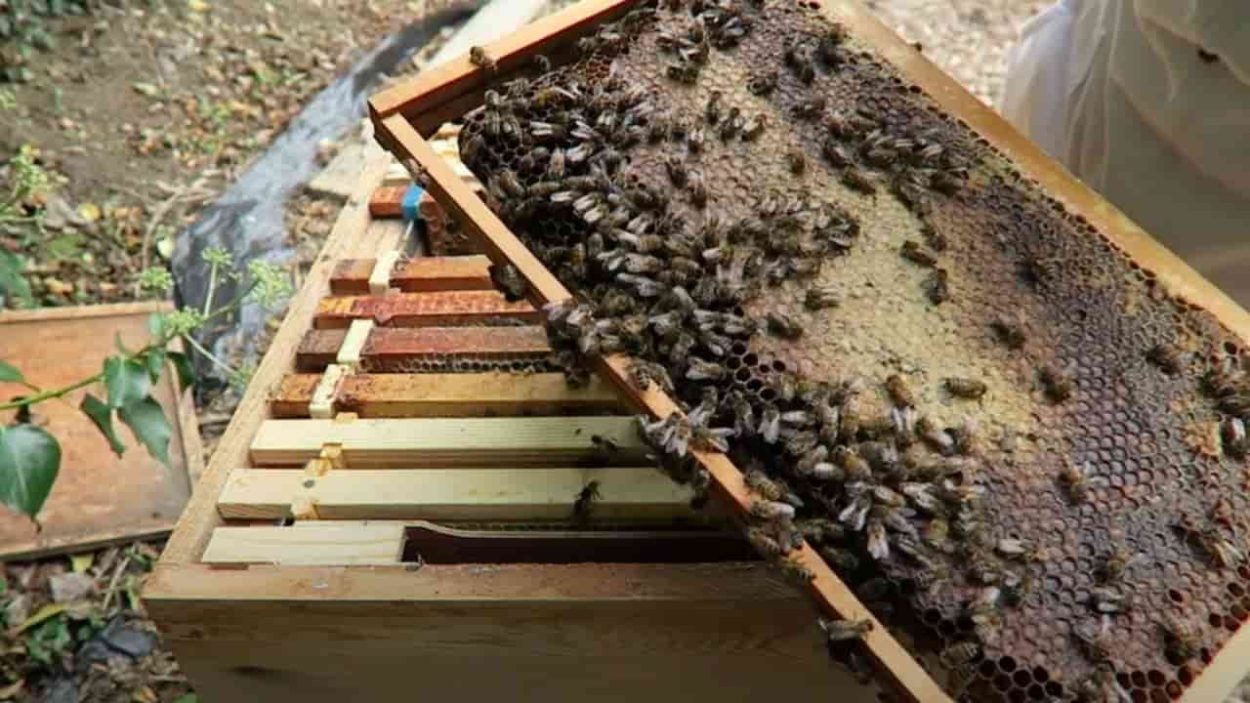
Disease Management and Prevention
Urban beekeepers encounter significant challenges in managing and preventing diseases that affect their honeybee colonies. One of these is American Foulbrood, a bacterial disease that can devastate hives.
Dalan Animal Health (U.S.) developed a vaccine program for queen bees against this disease, offering hope for improved disease management. Moreover, the expertise of Master Beekeepers and Ph. D.-level staff at Best Bees plays a crucial role in overseeing health practices and mitigating the impact of diseases on urban bee populations.
Implementing effective disease management protocols and prevention strategies is essential to protecting bee colonies from threats like American Foulbrood. This ensures the sustainability of urban beekeeping efforts while contributing to pollination services and ecosystem health.
Breeding for Genetic Diversity
Breeding for genetic diversity is crucial in maintaining healthy bee colonies. A diverse gene pool means better resilience against diseases and environmental stressors. By ensuring that the bees have a wide range of genetic traits, beekeepers can help fortify their colonies against colony collapse disorder (CCD) and other threats.
Introducing new genetic material into existing populations is essential to maintaining robust colonies. This practice strengthens the overall health of the entire hive population by increasing its ability to adapt to changing environmental conditions.
Genetic diversity contributes significantly to the long-term sustainability of urban beekeeping practices, ensuring that these vital pollinators thrive in urban environments.
Next up: The Role of Urban Beekeeping in Ecosystems
The Role of Urban Beekeeping in Ecosystems
Urban beekeeping plays a crucial role in pollinating urban agricultural areas, contributing to the growth of fruits, vegetables, and nuts. This helps build biodiversity by supporting the presence of various plant species within urban environments.
Contribution to Urban Agricultural Pollination
Urban beekeeping plays a pivotal role in bolstering agricultural pollination within cities. Bees, including honeybees and native species, are indispensable in the cultivation of urban green spaces and the production of food crops.
Notably, urban bees contribute to the pollination of over 85 diversified crops in local agriculture, thus significantly enhancing crop yield and quality. Best Bees’ use of honeybee data to support research on native pollinators crucial to urban agricultural ecosystems underscores their vital role.
The impactful contribution to urban agricultural pollination extends beyond quantifiable metrics; it encompasses a broader enrichment of local biodiversity resulting from the labor of worker bees across metropolitan areas.
Furthermore, this intervention aligns with sustainable practices such as agroecology and ecological engineering, which emphasize balanced ecosystem services. Overall, these efforts reflect an intricate yet essential relationship between urban beekeeping and sustainable agriculture.
Innovations such as precision beekeeping techniques coupled with AI-powered tools further showcase progressive integration with modern scientific methodologies aimed at augmenting pollination efficacy within urban landscapes while harmonizing human activities with natural processes for a biodiverse and resilient future.
Impact on Urban Floral Biodiversity
Increasing the number of pollinators in cities can lead to better plant pollination, supporting a diverse range of flowers and plants. Urban areas are home to various pollinator species due to their rich floral diversity, which provides ample food sources for bees, bumblebees, and other pollinators.
This contributes significantly to maintaining and enhancing urban floral biodiversity by ensuring that a wide array of plant species are effectively pollinated. As a result, this sustains healthy ecosystems within urban environments while also promoting green spaces that benefit from productive and thriving floral populations.
Moreover, sustaining and increasing population numbers of these essential insect species has a positive impact on urban floral biodiversity by facilitating greater genetic diversity among plant species.
This, in turn, helps create more resilient and adaptable urban flora that can withstand environmental changes such as climate fluctuations or habitat disruptions.
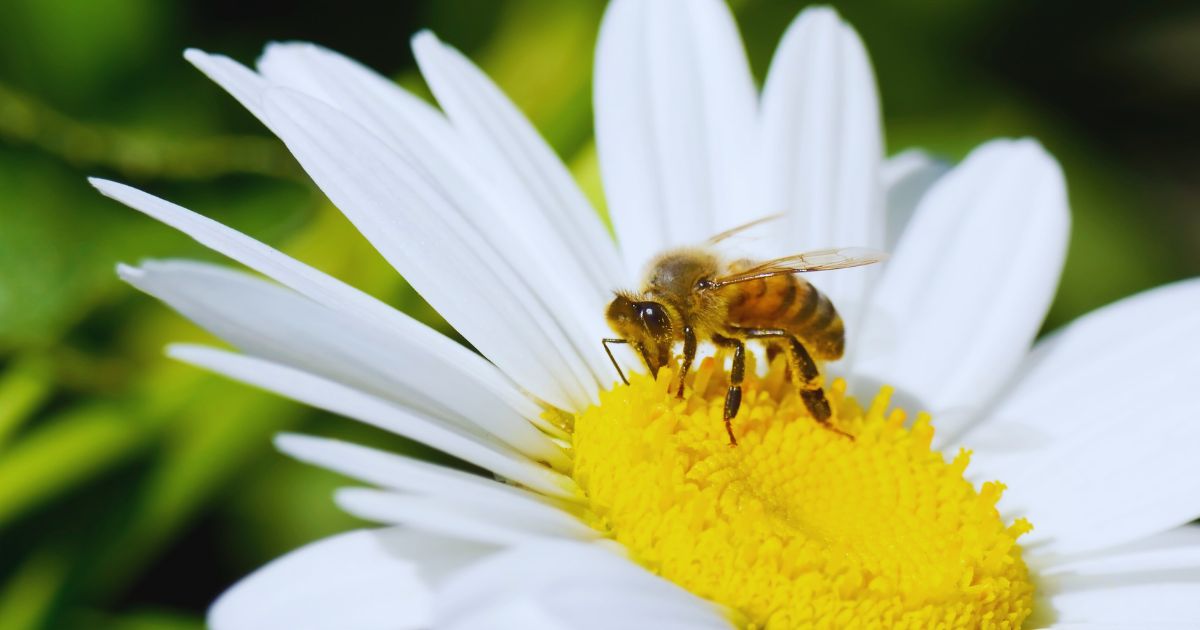
Future Trends in Urban Beekeeping
Urban beekeeping is swiftly evolving to adopt intelligent technologies. Future trends in urban beekeeping are characterized by the increased use of AI-powered tools and precision techniques, which aim to improve hive management processes and optimize bee health.
Additionally, there is a growing emphasis on community engagement and educational programs to promote greater awareness and support for sustainable apiculture practices within urban settings.
Increased Use of Smart Technologies
Beekeeping is getting more innovative with the increased use of technologies like AI and 3D printing. Innovations such as drone monitoring and blockchain for product authenticity are making waves in the industry.
For example, Humming Hyve’s “Bumble Bee V1.0” uses AI to monitor hive health efficiently.
This tech wave helps beekeepers manage hives better through data-driven decisions supported by intelligent tools, ultimately benefitting urban environments. For instance, in-hive sensors and automated systems provide real-time insights into hive conditions. In contrast, remote hive monitoring allows beekeepers to keep a close eye on their colonies from a distance.
Greater Emphasis on Community Engagement
Moving forward from the increasing use of smart technologies, a crucial aspect in the future of urban beekeeping is placing greater emphasis on community engagement. Initiatives such as community-supported apiculture promote educational workshops and improve ecological literacy and citizenship.
These programs play a vital role in educating and involving the local population in sustainable beekeeping practices, contributing to an informed and engaged community that supports urban biodiversity.
Community-supported apiculture initiatives involve organizing educational workshops to promote awareness about the significance of bees in urban ecosystems. By actively engaging with residents, these programs impart knowledge about urban beekeeping, emphasizing its benefits for local green spaces and overall environmental sustainability.
Moreover, by fostering partnerships between beekeepers and communities, these initiatives help instill a sense of responsibility toward ecological conservation through practical education and involvement.
Such community engagement not only supports the growth of urban beekeeping but also enriches public understanding of ecosystem interdependence.

Expansion of Educational Programs
Promoting urban beekeeping in schools and communities is crucial for raising awareness about bees’ vital role. Educational initiatives can disseminate knowledge about bees’ importance, boosting urban biodiversity (Solomen et al., 2017).
Best Bees, a leader in hive optimization, actively participates in school programs to educate students on the significance of sustainable beekeeping practices. By involving young minds in educational programs, we’re cultivating a generation with a deep understanding of ecological balance.
Moreover, these endeavors create opportunities for future scientists and ecologists who can promote responsible apiculture and contribute to preserving our ecosystems.
By utilizing advanced educational tools and strategies from organizations like Best Bees (Goulson et al., 2015), schools and communities equip themselves with the necessary skills to support this vital cause.
Expanding such efforts will not only foster environmental stewardship but also drive innovation within urban spaces (Johnson & Potts, 2016).
The collaboration between educational institutions and notable entities like Best Bees is crucial for shaping conscientious individuals who can lead sustainable changes within their local environments.
– Solomen S & Higgins D (2017) “The Role of Beekeeping in Urban Biodiversity,” Journal of Ecology.
– Goulson D et al. (2015) “Educational Tools Promoting Sustainable Apiculture,” Environmental Science Quarterly.
– Johnson C & Potts S (2016) “Urban Beekeeping: Fostering Knowledge Amongst Young Minds,” Nature Education Review.
Societal Impact and Outreach
– Community Engagement: The Role of Urban Beekeeping
– Educational Initiatives: Urban Beekeeping Programs in Schools and Communities
Community Supported Apiculture
Community Supported Apiculture, often referred to as CSA aims to engage communities in beekeeping through educational workshops and adoption programs. These initiatives not only raise awareness about the importance of bees but also work towards enhancing local ecosystems.
By involving urban populations in apiculture activities, CSA creates opportunities for people to connect with nature and gain a better understanding of the crucial role that bees play in our environment.
Moreover, these programs help build a sense of community around sustainable practices while enhancing biodiversity within urban settings.
Educational Initiatives in Schools and Communities
Educational programs in schools and communities play a vital role in raising awareness and fostering connection with urban nature. These initiatives promote ecological literacy and civic engagement among students and the public.
These programs equip individuals with the knowledge to understand and appreciate their environment by providing learning opportunities about bees, pollination, and biodiversity.
Furthermore, educational efforts contribute to nurturing a sense of accountability toward environmental conservation. When individuals are educated about the importance of bees in ecosystems, they are more likely to engage in actions that support sustainable practices.
This not only benefits bee populations but also contributes to the overall health of urban environments. With increased understanding comes a greater willingness to actively participate in initiatives aimed at protecting pollinators and preserving natural habitats within urban settings.
By integrating customized educational content into school curriculums and community outreach activities, it becomes possible to instill a deeper understanding of the essential role that bees play in maintaining healthy ecosystems.
As a result, students and community members alike have the opportunity to become champions for environmental stewardship in their local areas.
Conclusion
Urban beekeeping is at an exciting crossroads with the adoption of new technologies and sustainable practices. The future promises further advancements in mobile apiary management, AI-powered tools, and sustainable urban development.
As cities seek to enhance biodiversity, community engagement will be crucial in fostering a harmonious relationship between humans and bees. Innovations such as precision techniques and data-driven decisions are poised to revolutionize urban beekeeping for a more environmentally resilient future.
FAQs
1. What is urban beekeeping, and how does it relate to the agriculture industry?
Urban beekeeping involves maintaining bee colonies in city environments and contributing to the agriculture industry through pollination services.
2. How are trends like automation and artificial intelligence impacting commercial beekeeping?
Automation and artificial intelligence are revolutionizing commercial beekeeping by automating tasks such as monitoring hives, tracking swarms, and assessing the health of broods for diseases like nosema or threats like small hive beetles.
3. What is a Langstroth hive?
A Langstroth hive, named after Lorenzo Lorraine Langstroth who understood “bee space”, is a type of beehive with removable combs that makes managing bees easier in both rural and urban settings.
4. Are there any innovations related to insulation in urban hives?
Yes! Innovations include better insulation techniques for hives which help maintain optimal temperatures for honeycomb production, royal jelly creation, and overall health of the apis mellifera or domesticated honeybee colony.
5. How do changes in global ecology impact urban bees?
Changes such as crop rotation practices can affect available forage, leading to nutritional imbalances. In contrast, exposure to neonicotinoids could harm solitary bees like mason bees (osmium) or social ones like bumblebees (Bombus).
6. Can technology assist with challenges faced by urban beekeepers?
Absolutely! Computer vision can help identify issues within hives, while telemetry provides real-time data about swarm movements. This helps balance mutualism between humans and bees and ultimately supports functional ecology within our cities.






Leave a Reply